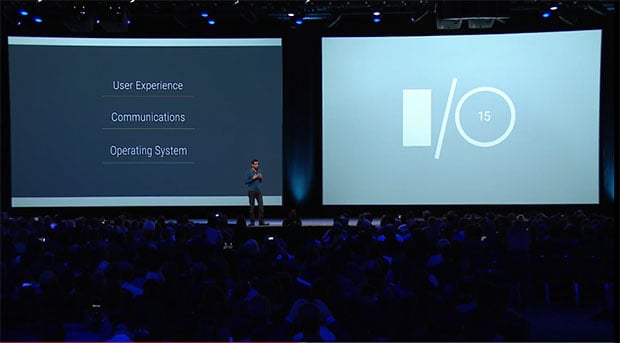Google Previews Brillo OS And Weave Protocol For IoT Domination
It was previously rumored that Google was working on a platform for the Internet of Things (IoT) called Brillo, and today at its annual I/O developers conference, the Mountain View firm let the cat out of the bag. Developed in collaboration with people from Google's Nest, Android, and Chrome OS teams, Brillo is an operating system that's derived from Android and stripped down to the bare essentials.
There are two reasons Google is going down this road. The one it didn't fess up to is because the IoT market is exploding and there's the potential to make a boatload of money, especially for pioneers of the category, of which Google wants to be. But the official reason is because the IoT market at this early stage can be a complicated one for developers to get into. Google VP Sandar Pichai likened it to when smartphones were new.
"There are a whole lot of challenges. Today, people are making connected devices, like smart light bulbs, but it's really hard for device manufactures," Pinchai said. "Just like the early days of smartphones. You don't know how exactly to build your software stack, developers don't know how to target these experiences. And finally for users, it is really confusing to make all of this work together."

Google's solution is to provide an end-to-end solution that consists of an underlying operating system and a communications protocol so that devices can talk to each other seamlessly, resulting in a simple and elegant experience for users.

The foundation of this vision is Brillo, which is essentially an extremely basic and polished version of Android, or its lower layers consisting of the kernel and Hardware Abstraction Layer. It's build for devices that have minimal system requirements, like door locks. But because it sports Android DNA, developers get access to things like Wi-Fi and Bluetooth LE, and support for alternate connectivity protocols like Tread.
Pinchai said that security was a point of focus from the ground up. Another upside is that there's immediate scale here since it's based on Android. Device makers should have little trouble utilizing Brillo, who can also manage their creations from a centralized management console, provision their devices, update them, and so forth.

In addition to Brillo, Google talked about Weave, the communications layer that makes it possible for IoT devices to communicate with each other. Weave is Google's no-longer secret sauce to its recipe for user friendly devices. By making interoperability both possible and easy, piecing together a truly smart home should, in theory, become much more accessible.
Weave provides the common language for that kind of interoperability between devices. It also allows for communicating with the cloud and to your phone or tablet. To use Pinchai's example, with Weave, a door can define what "lock" and "unlock" means, and all other devices in the ecosystem will also understand and be able to work off of that. So maybe you hit a button on your smartphone to unlock your door, and when you door, which then tells the lights in your smart home to turn.
That's just one scenario -- Weave certified devices will be able to communicate with each other, and then it's up to developers to come up with creative ways to take advantage that. It should also be pointed out that Weave is a cross-platform protocol, so you can use Weave and Brillo together, or run Weave on top of your existing stack.

Google said Brillo will go into developer preview in the third quarter of this year, while Weave's full stack will be available by the fourth quarter.

